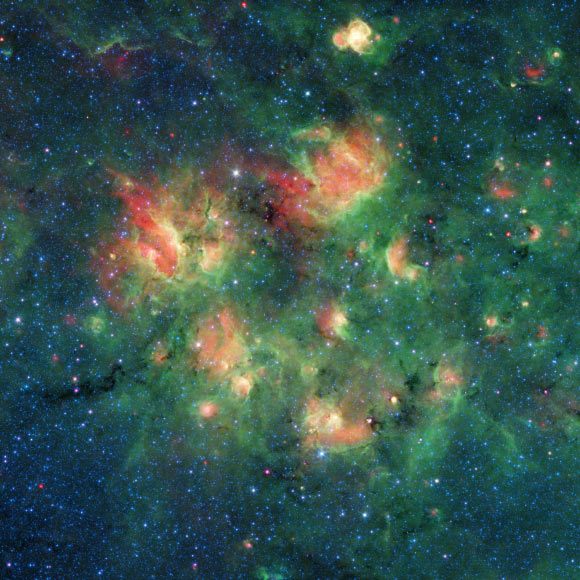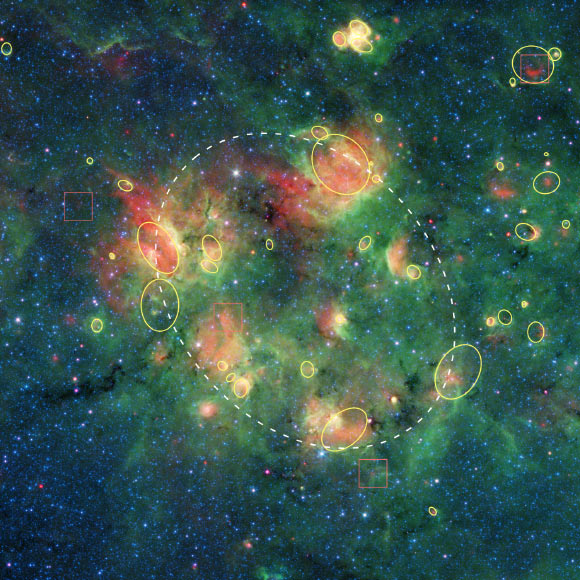NASA’s Spitzer Space Telescope Sees Cosmic Bubbles in Aquila | Astronomy – Sci-News.com
NASA’s Spitzer Space Telescope has imaged an active star-forming region in the constellation of Aquila. The region is full of cosmic bubbles, which are inflated by wind and radiation from young, massive stars. Each bubble is between 10 and 30 light-years across, and is filled with hundreds to thousands of stars.

This infrared image from Spitzer shows a cloud of gas and dust full of cosmic bubbles in the constellation of Aquila. Image credit: NASA / JPL-Caltech.
Spitzer is designed to detect infrared radiation, which is primarily heat radiation.
Its highly sensitive instruments allow astronomers to peer into cosmic regions that are hidden from optical telescopes, including dusty stellar nurseries, the centers of galaxies, and newly forming planetary systems.
Its infrared eyes also allows scientists see cooler objects in space, like brown dwarfs, exoplanets, giant molecular clouds, and organic molecules that may hold the secret to life on other planets.
“Many interstellar nebulas are best observed in infrared light because infrared wavelengths can pass through intervening layers of dust in the Milky Way Galaxy,” Spitzer astronomers said.
“Visible light, however, tends to be blocked more by dust.”
The colors in the new Spitzer image represent different wavelengths of infrared light.
“Blue represents a wavelength of light primarily emitted by stars; dust and organic molecules called hydrocarbons appear green, and warm dust that’s been heated by stars appears red,” the astronomers explained.
“Also visible are four bow shocks — red arcs of warm dust formed as winds from fast-moving stars push aside dust grains scattered sparsely through most of the nebula.”

In this Spitzer image, the yellow circles and ovals outline more than 30 cosmic bubbles. Image credit: NASA / JPL-Caltech.
The bubbles and bow shocks in the Spitzer image were identified as part of The Milky Way Project, a citizen science initiative on Zooniverse.org platform.
Citizen scientists looked through images from Spitzer’s public data archive and identified as many bubbles as they could. More than 78,000 unique user accounts contributed.
The full Milky Way Project catalogs, which list a total of 2,600 bubbles and 599 bow shocks, are described in a paper in the Monthly Notices of the Royal Astronomical Society.
_____
Tharindu Jayasinghe et al. 2019. The Milky Way Project second data release: bubbles and bow shocks. MNRAS 488 (1): 1141-1165; doi: 10.1093/mnras/stz1738
This article is based on text provided by the National Aeronautics and Space Administration.





